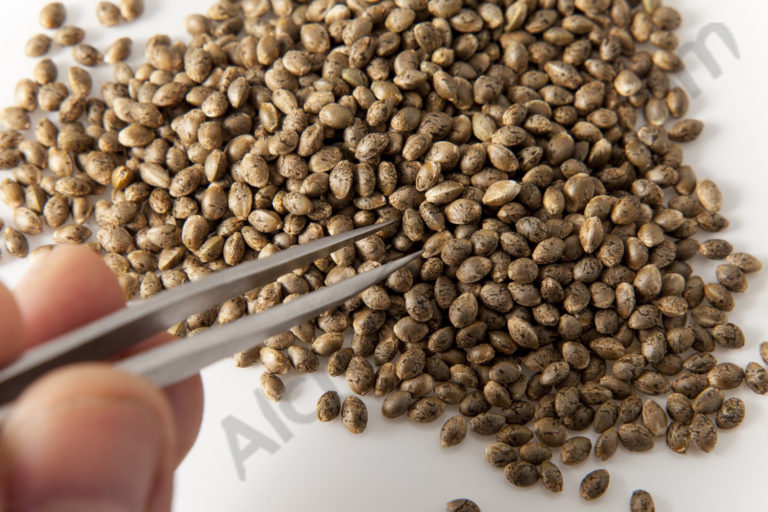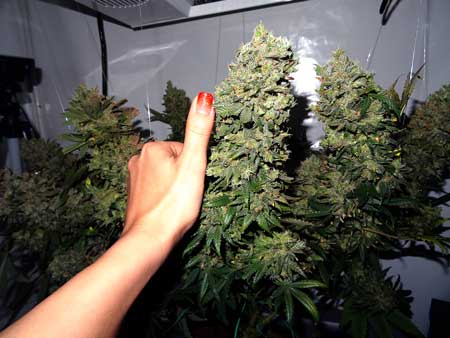
What is a marijuana strain?
If you’ve read a little about marijuana, or if you enter most dispensaries, you might see the words indica, sativa, and hybrid. Generally, most people divide marijuana into these three categories.
Indica, which originates from the Hindu Kush mountains of India, is believed to have a relaxing effect on the user. Sativa has a more energizing effect, while hybrid is a combination of the two.
Many industry experts, however, are reconsidering the indica, sativa and hybrid categories. According to Amos Elberg, head of data science at Confident Cannabis, these terms are more or less meaningless.
“We see samples of all cannabis products tested through our partner labs, and when we look at all the data, particularly of the chemical makeup of flower, we see no identifiable characteristics that are consistent with indica, sativa, or hybrid,” he explains.
“Essentially people are using these terms as catchalls for effect, but they're not all consistent with those effects. Some indica makes some people wired, not couch-locked, for instance.”
In other words, people shouldn’t be alarmed if a reportedly energizing sativa strain has more of a mellowing effect, or if an indica strain makes them feel more bubbly and excitable.
Beyond indica, sativa, and hybrid, dispensaries might divide the types of cannabis they have into strains. Strains are essentially different breeds of cannabis, and they’re bred to have specific effects on the user.
But if the terms indica, sativa, and hybrid are essentially useless categorizations, are strain names also meaningless?
Not exactly, says Elberg.
“Not all seeds that are sold under the same name are genetically identical, or even necessarily related. Some producers may choose to create a strain name essentially as a branding exercise, or to identify their product with an existing name because they believe the product matches characteristics the market expects from product sold under that name,” Elberg explains.
There are, however, still consistencies among product sold under specific strain names, Elberg adds.
“In general, for the less common names, product sold by different vendors tends to be pretty consistent,” he notes. “For the most common strain names, however, a wider variety of different products are sold.”
If you purchase product from a quality source, the strains should be more or less consistent. Bear in mind, however, that every person reacts differently to cannabis.

What to look for when selecting your marijuana strain?
With all the different types of strains in the market as we have indicated above, it can get extremely difficult to know which one is the best. Many people get disappointed by buying the wrong strains due to lack of knowledge. You can however avoid this by learning how to tell good weed from bad weed. Below are some of the guidelines that may help you especially if you are looking for the best strains to grow.
Smell
When it comes to marijuana, one of the best testing tools is your sense of smell or rather your nose. By smelling the weed, you can tell the kind of aromatic compounds present in the product. The compounds, called terpenes are present in every strain and you can easily smell the type that you want and the type that you do not want. In some states, this may be difficult because there is a state regulation requiring the sealing up of all pot before sale. Those that use the smell technique effectively are those in states that have no laws against marijuana sales or their packaging styles. If you cannot use your smelling powers, then the only other alternative is to find a seller that you can trust to give you the best.
Color
No specific color determines the quality of weed but unique strains have their own signature hues that you cannot miss. The natural hues range from dark purple, bright green and gold. If you find weed with a discoloring, then most likely it is bad weed. Long exposure to sunlight bleaches the buds and you can easily tell that by looking at them. There is also a difference between bleached buds due to too much light and buds with a naturally light color.
Bleached buds have irregular discoloring while the light coloured buds have an even color on the entire bud. A bleached bud will not have the same aroma as a normal bud. You may also notice that some of the buds have a faded gold color, which is an indication of staleness and old age. The best gold coloured strains do not look green but they have an even attractive color all around the buds. One good example is the Acapulco Gold strain, which is one of the most popular weed strains.
Size and shape
It is always wiser to pick the larger pot nugs because most likely they have more potency than the smaller ones. This however does not mean that all small pot nugs are not potent enough. The popcorn nugs for example are small with very high potency. Just as the size is important, so is the shape. Before selling their pot, growers trim off the leaves to ensure there are no oily glands that could get you high. Farmers either do the trimming by hand or use automated machines. While machines make the work of trimming easier, they also damage the flowers and shake off the most important part of the flower, which is the trichome.
Machine trimmed flowers look neat with even edges but this does not necessarily mean they are the best. Hand trimmed flowers on the other hand have irregular edges but lose very few trichomes. If you check the jar containing the flowers, you may find a pile of crystals at the bottom. If the amount of crystals is huge, then it means that the strain you are buying lost several trichomes and it may not do you much good.
Weed hairs and crystals
Good weed should have some hair on it. If you notice this, then it means that your weed went through proper care and handling. As you check out for hairs, also check your weed for the presence of salt like crystals. Crystals appear in the form of white dots on the weed plant. the white dots are glands that produce the cannabinoids responsible for the high. The saltier the plants the better it is because it is proof that they contain more cannabinoids.
Cannaboid percentage
In some states, it is a requirement that all weed should have their cannaboid percentage on the labels as it gives you the label of THC contained in the product It is very important to check the labels if you are in the hunt for good quality weed. The cannaboid percentage should not be the only determining factor though. You should also find out the profile of the terpenes present in the strain you choose before purchasing.
If you are a beginner and would like to grow the cannabis indoor, we suggest you to choose a weed grow package, since a indoor grow kits with everything you need also saves you time from researching for the appropriate tools to buy.
Comments
Post a Comment